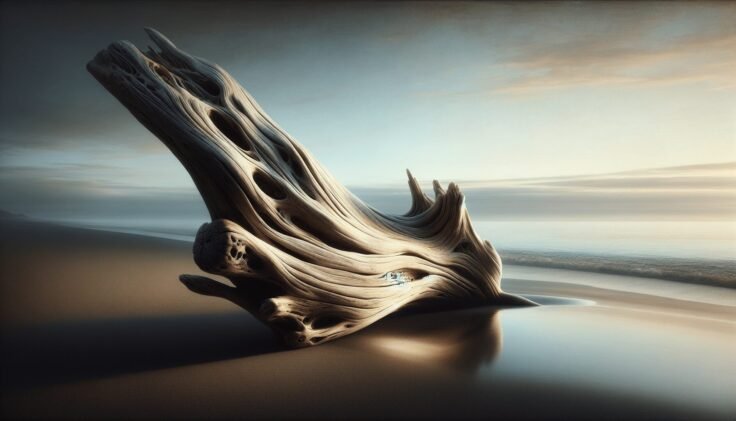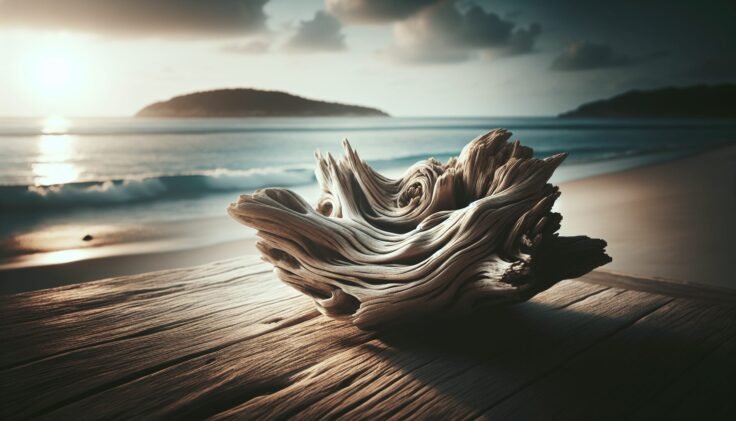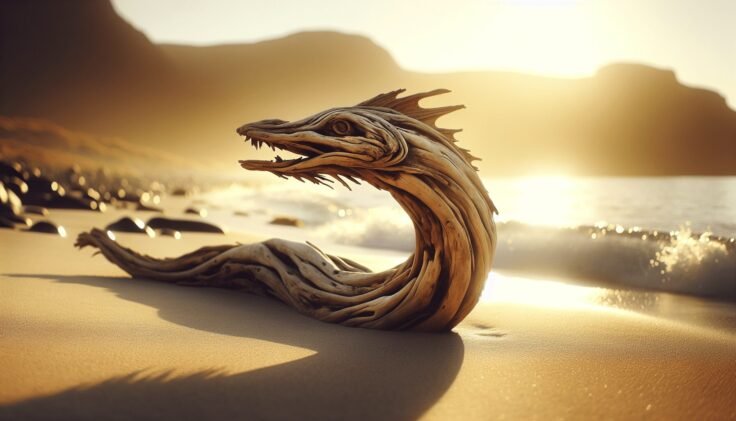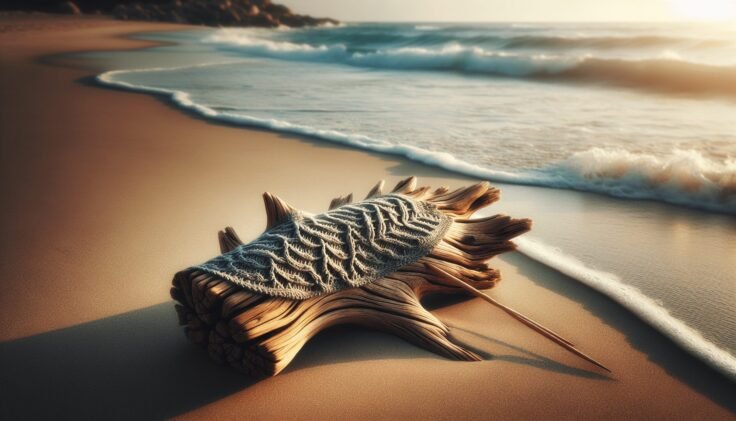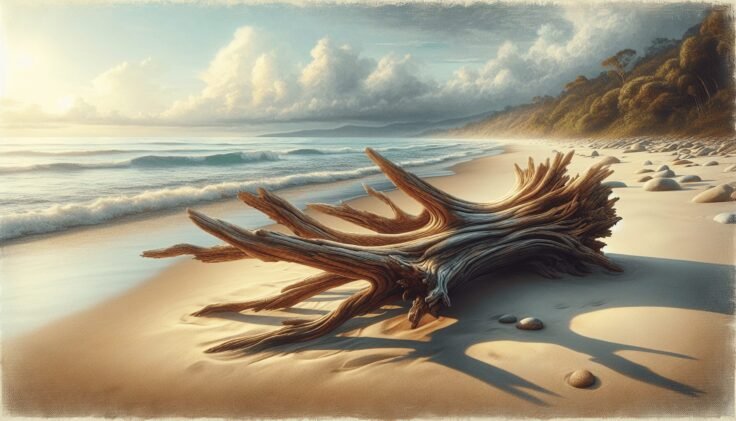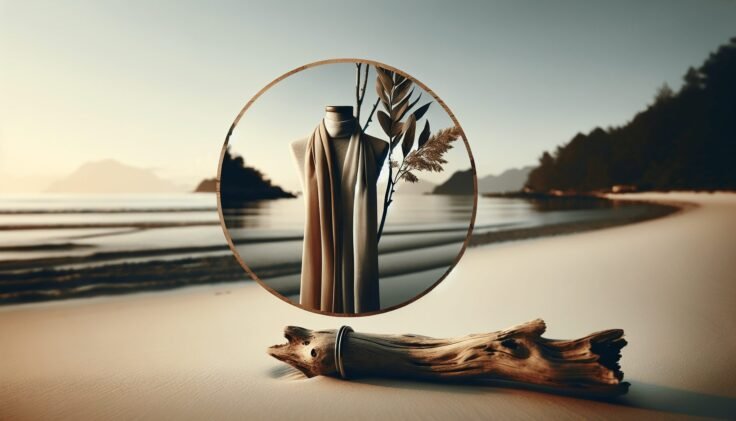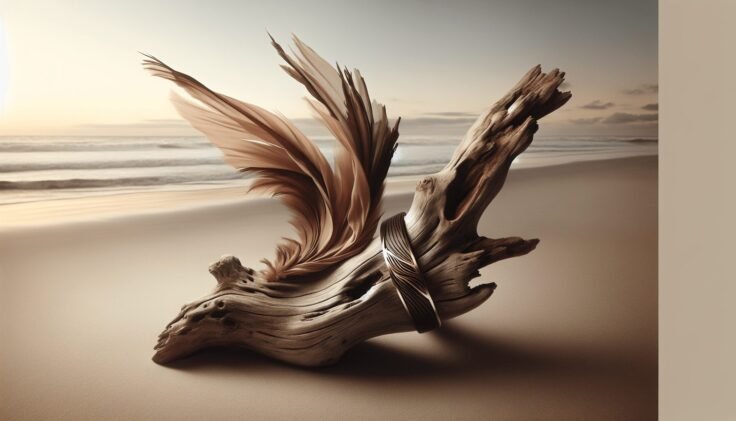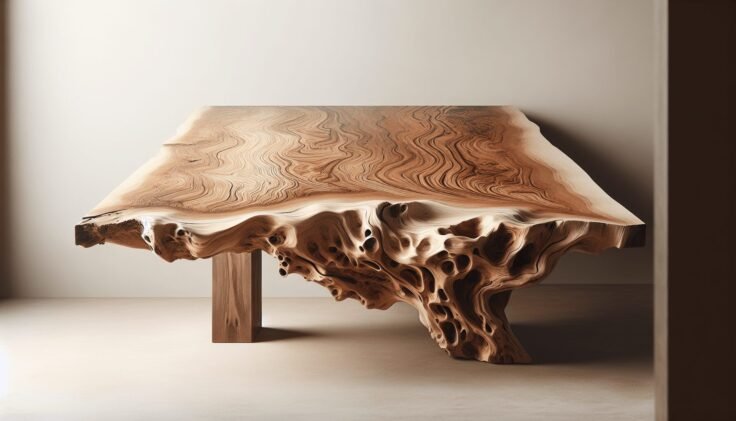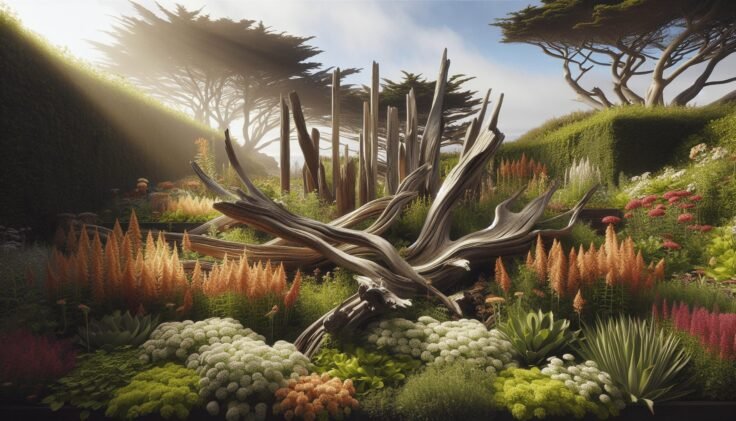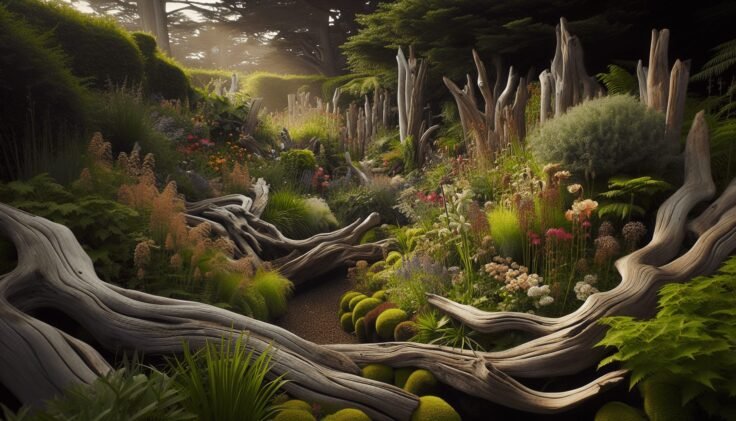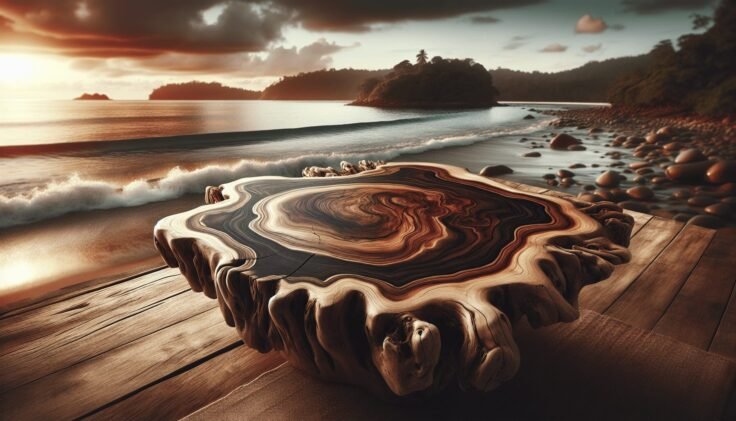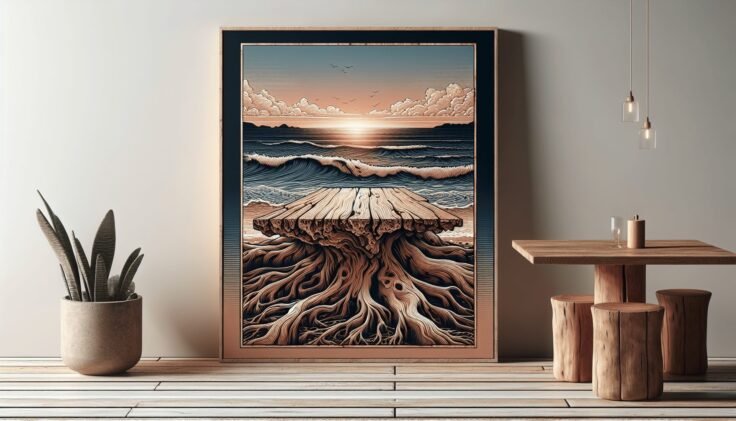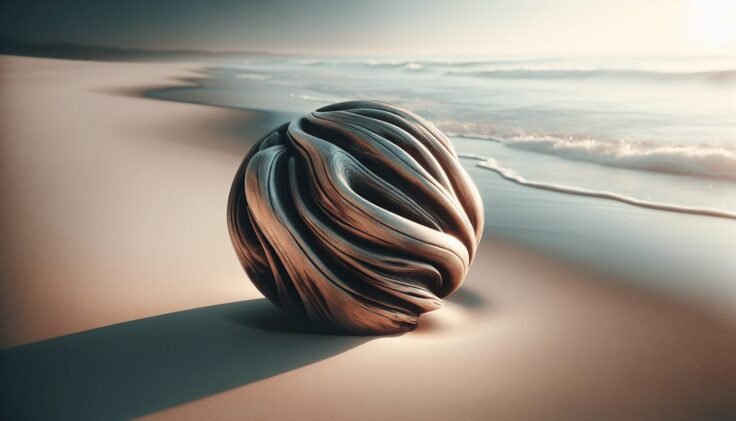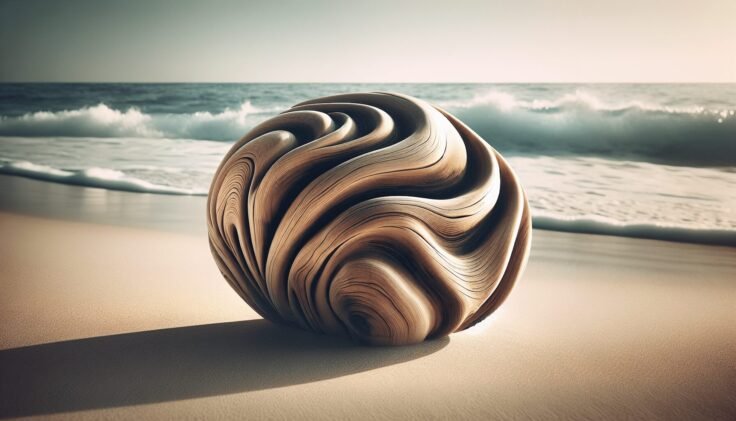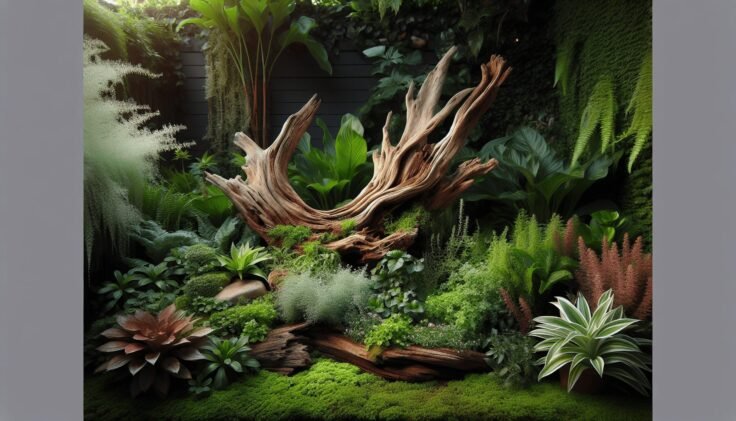Have you ever thought about adding a touch of nature to your kitchen in a unique way? The art and practicality of a driftwood knife holder might be just what you’re looking for! Not only does it bring the calming, rustic vibe of the seaside indoors, but it also serves as a functional and eye-catching piece in your culinary space. By using driftwood, you’re not only upcycling nature’s discarded treasuries but also baking in a bit of storytelling history into your décor.

Understanding Driftwood
What is Driftwood?
Driftwood is wood that has been washed onto shore by the action of winds, tides, waves, or by a drogue. It often originates from trees or branches that have fallen into rivers or oceans, later settling onto beaches with the ebb and flow of the tide. Over time, harsh environmental elements smooth and tone its texture, leading to its often striking, polished, and unique shapes.
The Appeal of Driftwood
Why is driftwood so mesmerizing? Maybe it’s the weathered, bleached look that captures the eye, or perhaps it’s the thought of the journeys it might have taken through its life. Whatever it is, driftwood stirs the imagination. Its appeal lies in its history, its texture, and the one-of-a-kind uniqueness each piece brings.
Benefits of a Driftwood Knife Holder
Aesthetic Value
Incorporating driftwood in your kitchen offers a natural, coastal aesthetic that complements both modern and traditional interiors. Its organic shape and appearance can significantly uplift your kitchen’s ambiance, merging your indoor space with the serenity of nature.
Functional Benefits
Apart from its beauty, a driftwood knife holder is extremely practical. It secures your knives safely and keeps countertops clutter-free. Driftwood naturally provides numerous grooves and crevices ideal for snugly fitting knives.
Eco-Friendly Choice
Using driftwood as a material is environmentally-friendly. Instead of contributing to waste, these natural remnants are repurposed into something beautiful and functional. This minimizes the need for industrially manufactured alternatives, contributing to sustainable living.
How to Choose Driftwood for a Knife Holder
Sourcing Driftwood Responsibly
When collecting driftwood, ensure you’re allowed to do so. Some areas have restrictions to preserve local ecosystems. It’s always essential to gather sustainably, taking only what’s needed and leaving ample for wildlife that might rely on driftwood in their habitat.
Picking the Right Piece
You’ll need a piece that not only fits your aesthetic vision but is also substantial enough to support knives. Look for pieces that offer stability, have interesting shapes, and aren’t prone to breaking. An ideal piece should be solid with inherent grooves or flat areas where knives can be easily inserted or held.
Preparing Driftwood
Before using your selected driftwood piece, it needs to be thoroughly cleaned. Scrubbing and soaking it in a mild bleach solution helps remove salt, mold, and potential pests. Allow it to dry completely, ensuring it’s free of moisture to prevent wood decay.
DIY Driftwood Knife Holder: A Step-by-Step Guide
Materials and Tools Needed
To craft your driftwood knife holder, gather:
- A suitable piece of driftwood
- Sandpaper (medium and fine grit)
- Protective wood finish or natural oil (like teak oil)
- Drill with drill bits
- Wood glue
- Knife magnets or holders (optional, if you want a magnetic rack function)
Step 1: Sanding and Shaping
Start by sanding your driftwood thoroughly to smooth out rough edges. This not only enhances the appearance but ensures safety when handling the wood.
Step 2: Designing Knife Slots
Plan where your knives will sit. You can opt to drill holes directly into the driftwood, or affix magnet strips if you prefer a magnetic knife holder. When drilling, always choose a drill bit slightly larger than your knife blades for easy insertion and removal.
Step 3: Finishing Touches
Once shaped and drilled, apply a wood finish or natural oil to protect the driftwood and bring out its natural color. Allow the finish to fully cure before adding any knives to the holder.
Optional: Magnetic Option
If you chose to add magnets, attach them to your driftwood using wood glue. Ensure they’re securely fastened and positioned to hold knives firmly without them slipping off.
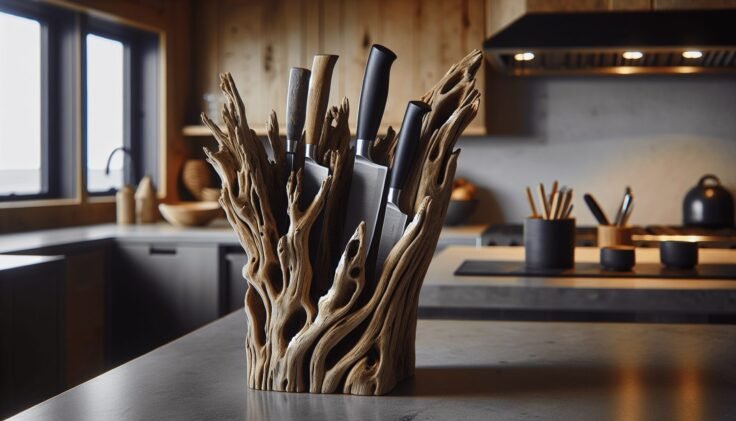
Enhancing Your Driftwood Knife Holder
Combining with Other Materials
For additional flair, consider incorporating other materials. You could integrate stone, metal, or glass elements, creating a mixed-material holder that adds another layer of texture and interest.
Personalizing Your Creation
Adding personal touches, such as engraving initials or painting designs, can make your driftwood knife holder uniquely yours. This not only elevates its appearance but makes it a memorable conversation starter.
Regular Maintenance
Keep your driftwood knife holder looking fresh with occasional maintenance. Wipe it down with a damp cloth to remove dust and apply a fresh coat of oil or polish as needed to maintain its sheen and prevent drying.
Driftwood Knife Holder vs. Traditional Knife Blocks
| Feature | Driftwood Knife Holder | Traditional Knife Block |
|---|---|---|
| Aesthetic | Unique, rustic, natural | Often uniform, generic |
| Environmental Impact | Eco-friendly, upcycled material | Usually mass-produced |
| Customizability | Highly customizable | Limited customizability |
| Cleaning and Maintenance | Requires regular dusting and occasional oiling | Easier to wipe clean |
| Durability | Dependent on the wood’s initial condition and maintenance | Typically sturdy but with limited aesthetic variation |
Where to Buy Ready-Made Driftwood Knife Holders
If crafting isn’t your cup of tea, ready-made driftwood knife holders are available! Websites such as Etsy or specialty artisanal shops often carry these, each typically offering a myriad of designs that showcase different woods and styles. Think about what look you want for your kitchen, and you’re likely to find something that speaks to your aesthetic needs.
Conclusion
Embracing nature’s art into your daily life through a driftwood knife holder brings a unique blend of function and beauty. Whether you decide to embark on a DIY adventure or opt for a crafted masterpiece, this charming piece can be an exquisite and eco-friendly addition to your kitchen. Not only will it serve you well by organizing your tools, but its rustic charm will continually remind you of the beautiful, ever-changing dance between wood and sea. Embrace the driftwood allure, and let a slice of the serene shore transform your culinary space.
